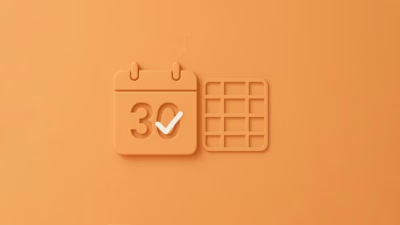You’ve probably seen those “Become a Data Scientist in 6 Weeks!” ads. Let’s be honest: they’re full of it. Data science isn’t some quick-hit life hack. It’s a complex, multi-disciplinary field that demands real effort—math, code, curiosity, and a stomach for ambiguity.
But here’s the good news: if you’re committed and deliberate, 12 months is enough time to go from zero to employable. Not “kinda know Python.” Not “watched a few tutorials.” We’re talking portfolio-ready, job-interview-capable, confident-enough-to-say-it-out-loud data scientist.
I’ve broken this roadmap into natural phases—not by months exactly, but by mastery milestones. You might move faster or slower. That’s okay. Just keep showing up.
Phase 1: Build the Foundation (Month 1–3)
Let’s not kid ourselves. You’re not doing deep learning in week one. Start with the bedrock—math and code. This stuff is like brushing your teeth. Unsexy? Sure. But ignore it and everything rots.
What to learn:
- Python: This is your main tool. Don’t aim to master every corner—just get fluent with data types, loops, functions, and basic libraries like
pandas,numpy, andmatplotlib. - Math: Focus on statistics and linear algebra. You don’t need PhD-level depth. Just enough to know what a p-value means, how matrix multiplication works, and what variance tells you.
- Data Thinking: Start seeing the world in terms of data. Why does Amazon show you those products? What’s a “feature”? Why does your bank flag your card in another city?
How to do it:
- Use free resources like Khan Academy, CS50, or freeCodeCamp.
- Don’t binge-watch tutorials. Code along. Break things. Rebuild.
- Pick one small dataset (e.g. Titanic, Iris) and get curious. Ask questions, clean the data, make a plot.
Real Talk Moment:
I still remember spending four hours figuring out how to group data in pandas. It wasn’t the code—it was the logic. “What do I actually want to see?” That shift—learning to think in data—was way harder than the syntax.
tl;dr: Get comfortable with Python, stats, and basic data manipulation. If you can load a CSV and tell a story from it, you’re doing it right.
Phase 2: Get Dangerous with Data (Month 4–6)
You’ve got your hands dirty with data. Now it’s time to start building stuff. Not rocket science—yet—but definitely more than toy examples.
What to learn:
- Exploratory Data Analysis (EDA): This is 70% of real-world data science. Finding patterns, spotting weird outliers, figuring out what’s missing.
- SQL: Yes, still relevant. Learn how to query databases, join tables, filter rows. Every job expects it.
- Visualization: Start using
seaborn,plotly, or Tableau. Charts don’t just look good—they help you think better. - Projects: Build 2–3 serious mini-projects. Predict house prices. Analyze bike rentals. Scrape something from the web and model it.
How to do it:
- Pick datasets from Kaggle or open government sources. Avoid the overused ones, unless you’ve got a fresh angle.
- Write blog posts (yes, even if no one reads them). If you can explain your project clearly, you understand it.
- Ask “so what?” after every chart. If the insight doesn’t help someone make a decision, it’s just decoration.
Humbling Truth:
I once built a beautiful dashboard… that no one could use. Why? I forgot my audience. It was too technical, too busy, and lacked context. Data isn’t just for analysis—it’s for communication.
tl;dr: Get fluent in cleaning, exploring, and visualizing data. Build real projects, not just notebooks. Start telling stories with your work.
Phase 3: Enter the Models (Month 6–8)
Here’s where it gets exciting. You’ve probably dabbled with models already, but now we go deeper. Not just how to run them, but when and why.
What to learn:
- Supervised Learning: Linear regression, logistic regression, decision trees, random forests, and gradient boosting. Don’t memorize. Understand.
- Model Evaluation: Precision vs recall, AUC, confusion matrices. Learn to think about metrics based on business goals.
- Scikit-learn: Your modeling toolkit. Learn how to pipeline, cross-validate, and tune hyperparameters.
- Unsupervised Learning: Clustering, PCA, anomaly detection. Useful for understanding hidden structure.
How to do it:
- Revisit your earlier projects. Now add predictive power. What could you model?
- Use
scikit-learnto build your first pipelines. TryGridSearchCV. Play with tradeoffs. - Start reading Kaggle kernels (aka notebooks). Learn from how others structure their code and decisions.
Aha Moment:
The day I realized accuracy isn’t always the best metric? Game-changer. Especially in fraud detection, where 99% accuracy can still mean you miss every actual fraud. Metrics need context. Always.
tl;dr: Understand core ML models, when to use them, and how to evaluate them. Don’t just run code—defend your choices.
Phase 4: Go Full Stack (Month 9–10)
You’ve got the skills. Now let’s make you job-ready. That means thinking like an engineer, not just a data enthusiast.
What to learn:
- Version Control: Git and GitHub. Employers expect it.
- APIs: Learn how to pull data from APIs, and maybe even build your own with Flask or FastAPI.
- Deployment: Try putting a model online. Use
streamlit,gradio, or deploy withHeroku. - End-to-End Projects: Now it’s time for your portfolio centerpiece. Something you’d be proud to show in an interview.
How to do it:
- Build an app that solves a small but real problem. A recommender system, a price predictor, or a dashboard for local data.
- Document everything. Clean README. Thoughtful commits. Clear structure.
- Ask for feedback. Reddit, GitHub issues, a mentor, a community—get your code in front of eyes.
Personal Note:
My first deployed app barely worked. But the process of pushing it live, debugging it, and getting feedback? Worth 10 tutorials. You learn by breaking things in production.
tl;dr: Think beyond notebooks. Learn the tools of collaboration and deployment. Build one project that feels like a real product.
Phase 5: Get Hired (Month 11–12)
You’re almost there. This part is about turning skill into signal—getting noticed, getting interviews, and ultimately getting hired.
What to focus on:
- Portfolio Polish: Make sure your GitHub has at least 3 solid projects with clean documentation and interesting writeups.
- LinkedIn & Resume: Don’t just list skills. Tell stories. “Built a model to predict ___ with 85% precision.” Keep it punchy.
- Networking: Not optional. Connect with data people. Share your work. Comment on theirs.
- Mock Interviews: Practice both coding (LeetCode, SQL) and storytelling (“Tell me about a project you’re proud of…”).
Underrated Tip:
Apply before you feel ready. Seriously. No one feels 100% ready. If you wait until you feel “done,” you’ll miss opportunities to grow into the role.
tl;dr: Package your work, practice your pitch, and start applying. Confidence is built through action, not perfection.
How Can I Integrate a Learning Plan into My Journey from Zero to Data Scientist in 12 Months?
Starting from scratch in data science can feel overwhelming, but a well-structured learning plan can guide you. Focus on foundational skills like statistics and programming. Incorporate projects and real-world data to solidify your understanding. If you’re looking for a more detailed approach to planning your journey, check out a step-by-step guide to building your personalized data science learning plan.
Final Words: What 12 Months Really Means
Let’s be brutally honest for a sec. A year’s a long time. You’ll hit walls. You’ll feel behind. You’ll compare yourself to someone on Twitter who “learned deep learning in 3 weeks.” Ignore the noise.
Show up consistently. Focus on understanding, not speed. Build things. Share your learning. If you do that, by Month 12, you’ll be able to say something most people never can: “I taught myself data science, and I can prove it.”
And yeah—you’ll be employable.





